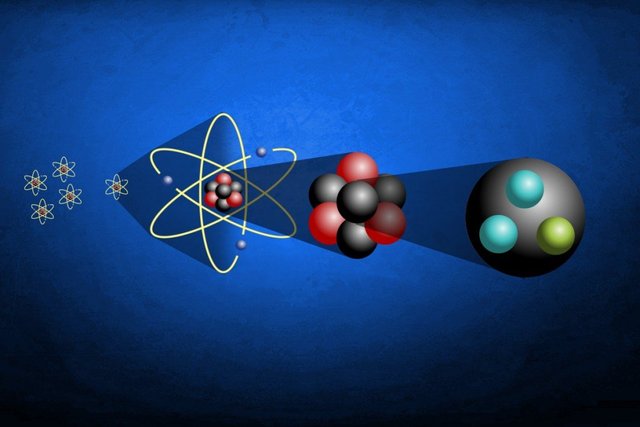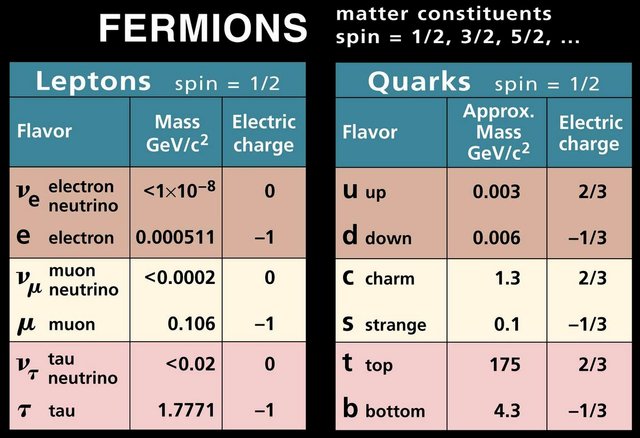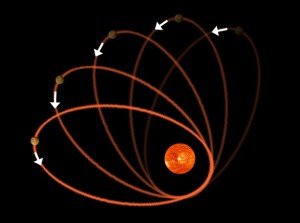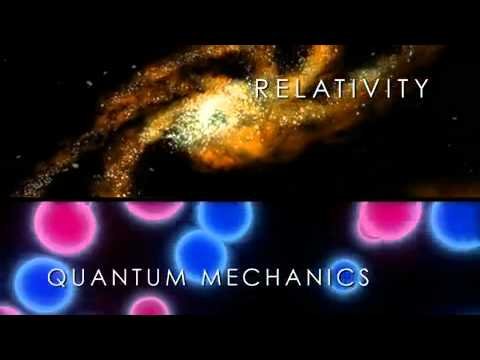String Theory I [The great conflict]

I decided to start a series of articles on the subject of string theory. I can not predict how long it will take to develop it. These articles will be in the form of popular science. Therefore, knowledge about mathematics and physics will not be needed, and if I decide to add something, I will try to explain thoroughly what is going on. At the end of each article I will add links to content related to the discussed topic for those who want to learn more and sources if I use it. I hope that it will be a successful intellectual journey around the world of string theory for people who know something about it, as well as for those who do not know anything about it. I invite you to read.
The great conflict
The twentieth century brought us an unpleasant split in science. In 1916, Albert Einstein created the greatest work of his life. The theory that described the universe on a large scale with such precision that no one has created anything better so far, which would be so close to experience. General relativity describes gravity as a curvature of space-time, double star systems, and black holes. It gives the theoretical basis to understand the universe on its largest scale.
At first, this theory was unappreciated because of the strange phenomena that it predicted. However, at the time when it was able to explain with great precision the precession of Mercury, scientists began to realize that despite the strange properties of the universe resulting from equations, Einstein's theory is correct. At that time, scientists also studied the microscopic world. Quantum mechanics developed by prominent personalities described objects such as molecules, atoms and even quarks. Both theories are so thoroughly tested that no one doubts that they correctly describe the universe. There is only one problem. The completely different mathematical tools are used to describe the micro and the macro world. In today's form, general relativity and quantum mechanics can not be correct at the same time.It is impossible to reconcile the two greatest theories that allowed us to describe the expansion of the universe and the structure of matter. In the universe, however, we encounter very extreme phenomena, such as neutron stars, black holes collapsing, which gather massive mass in a small space, or even the Big Bang, which emerges from particle a few orders smaller than the bacteria.
To accurately describe these types of phenomena, quantum mechanics and general relativity must combine their forces. A potential candidate for the generalization of these theories is the superstring theory (string theory). It eliminates the tension that occurs between Einstein's theory and quantum mechanics, and all this because it presupposes the existence of so-called strings at the lowest level of reality that create everything that surrounds us. It turns out that when we introduce the concept of the string, both hostile theories are beginning to complement each other.
Just as the general theory of relativity changed our view to time and space, and quantum mechanics made imperfection of our intuition and revealed how strange the microworld is, so string theory again requires that we completely change our views on the above features of the universe. To realize what string theory is, we need to know what we have understood so far in terms of matter.
Understand the matter

We know that our world consists of atoms that, contrary to the imaginations of the ancient Greeks, are divisible. Each atom consists of an atomic nucleus and electrons circling around it. The electron is considered to be an elementary particle because its internal structure has not been discovered. The atomic nucleus, however, consists of protons and neutrons. In the sixties it was discovered that the components of the atomic nucleus are also divisible. It was found that each neutron and each proton consists of a set of three quarks. Scientists called them down and up. And so the proton consists of two up quarks and one down quark, and a neutron of two down quarks and one up quark. No more fundamental bricks of matter have been found so far. In the meantime, several other particles have also been discovered. One of them is neutrino, which is an elementary particle and is very difficult to observe, because at the moment when you read this article through the whole Earth, and thus through your skin, an enormous amount of neutrinos passes. We do not feel them, however, because they almost do not interact with matter and fly freely through everything regardless of thickness. Another particle is a muon, which is similar to an electron, but its mass is about two hundred times larger. As the power of accelerators increased, the scientists used larger particles to collide. They found a lot more new particles in total. New types of quarks, another electron cousin, and new types of neutrinos have been discovered. The table below shows the discovered particles and their mass.

Due to similar properties, scientists have divided these particles into so-called generations. Generally speaking, all our Universe is made of these particles, and therefore we too (if the standard model is correct, but everything indicates that it does). We can see that this table manifests a kind of order. Where did this order in nature come from? Is it a coincidence or an act of creation? Why do particles have such a mass distribution? Why are there so many of them? There are many questions, but even more confusion, they introduce forces occurring in nature.
Fundamental interactions
We can give many examples of interactions. Punching against the wall, pushing the car, reheating the food in the microwave, magnets, or radioactivity. Physicists have collected a huge amount of this type of data over many years and have found that all impacts are a manifestation of the four fundamental ones. The most-known fundamental interaction is the gravity already described by Newton. We also know the most about her. Next we have electromagnetic interaction, or unification of electricity and magnetism, which Maxwell made. Then, the strong interaction and the weak interaction were also discovered.
Gravity allows us to stand on our planet, and allows the Earth to revolve around the Sun. Electromagnetism today is responsible for all the electronics that surrounds us. The strong interaction causes quarks in neutrons and protons to stick together and do not move away from each other, and the weak interaction causes radioactive decay. And now it will start to be interesting. There is a huge discrepancy between these forces in terms of intensity of interaction. Everyone knows what will happen when he jumps from a high building. We feel the gravitational force quite clearly. It turns out, however, that the intensity of gravitational force in comparison to the intensity of the electromagnetic force is insignificantly small. Imagine that we are bringing together two electrons. At first, the gravitational attraction will bring them closer to each other, and when they are close enough, the electromagnetic interaction will start repelling them (the electron has a negative charge, and we know that the same charges are repulsive). What will happen next? Electrons will collide with each other, or will they push away? It turns out that in this situation the electromagnetic influence will prevail, because it is stronger than the gravitational interaction by about one million billion billion billion (10 ^ 42) times. Fortunately, in the Universe, most objects consist of the same number of positive and negative charges that mutually cancel each other, thanks to which the electromagnetic force does not dominate the Universe.It was also shown that the strong interaction is about one hundred times stronger than the electromagnetic interaction and about one hundred thousand times stronger than the weak interaction. Another characteristic feature of strong and weak interactions is that they operate at very small distances (microscopic). However, there is some similarity between all basic interactions. They have their particles that carry particular forces. And so the particle transmitting the electromagnetic interaction is called * photon *, the particle of strong interaction * gluon *, the particle of weak interaction * intermediate vector bosons *, and the particle of gravitational interaction * graviton *. The table below shows the characteristics of each force.

Experimentally, three types of particles carrying interactions were found and their exact characteristics were given. The graviton is still waiting for the experimental confirmation. It turned out that it was very difficult to experimentally observe a particle of such poor interaction. No one knows why the Universe is provided with four fundamental influences, or why individual transmission particles have such properties. It is also not known where such differences in the intensity of individual forces come from. It turns out that if we change the intensity of one of the interactions would lead to huge changes. The universe would be a completely different place. The same applies to the properties of particles carrying these interactions. If we would increase the value of the electromagnetic force at least a little, it could happen that the atomic nucleus would be unstable and would break down, which would eliminate the possibility of a periodic system. If, on the other hand, we would increase the mass of the electron, they would combine with the protons and produce neutrons, which would destroy the atoms of hydrogen (the main element in the universe).
We exist in the Universe, whose laws prove to be conducive to life in this form that we know. A small change in parameters would result in the lack of the possibility of such a life. Is there any scientific explanation why these features characterize the Universe? The string theory gives us the answer to this question.
Additional information:
Source of pictures:
1 2 3 4 5 6
This is the English translation of my Polish article which is available here
Next articles coming soon. Thank you!


The only source of knowledge is experience.
- Albert Einstein
electrons are negatively charged.
Good article, looking forward to the next ones.
It depends on the point of view - if you come from neighborhood where negatively charged protons are abundant then negatively charged electron would look as normal to you as a hippo riding a bicycle ;-)
But I second the rest of your statement - this article is great indeed.
Thanks ! Corrected.
I find it weird that you call molecules, that consists of a very-well defined objects, things that are not molecules at all. Do you mind clarifying here? Thanks in advance!
Thanks for noticing. I just made a mistake in translating my polish article.
Thanks for taking the initiative. I haven't read the whole article yet, but the following statement is not correct in my opinion.
" In today's form, general relativity and quantum mechanics can not be correct at the same time.
It is impossible to reconcile the two greatest theories that allowed us to describe the expansion of the universe and the structure of matter ."
For instance, GR could be asymptotically safe. For technical details of what it means, check out this encyclopedic article. For a recent popularization of the concept, check out this article published in Quanta magazine.
Also, one could argue that if GR is a low energy limit of something else, then it is perfectly fine that GR is "non-renormalizeable", just like many other useful low energy effective field theories such as the Chiral Pertubation Theory . As John Donoghue puts it in his encyclopedic article:
"The problem of quantum gravity is not what we once thought it was. If you go back to early references, you will find many statements saying that general relativity and quantum mechanics are incompatible, that the combination of general relativity and quantum field theory produces a meaningless theory. It is understandable that some of the pioneers may have thought in this way, as some of our quantum methods are awkward when dealing with general relativity. However, these statements are not correct. "